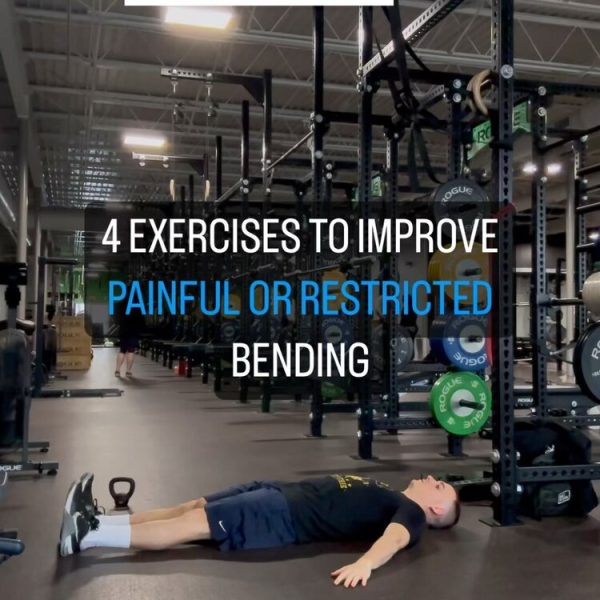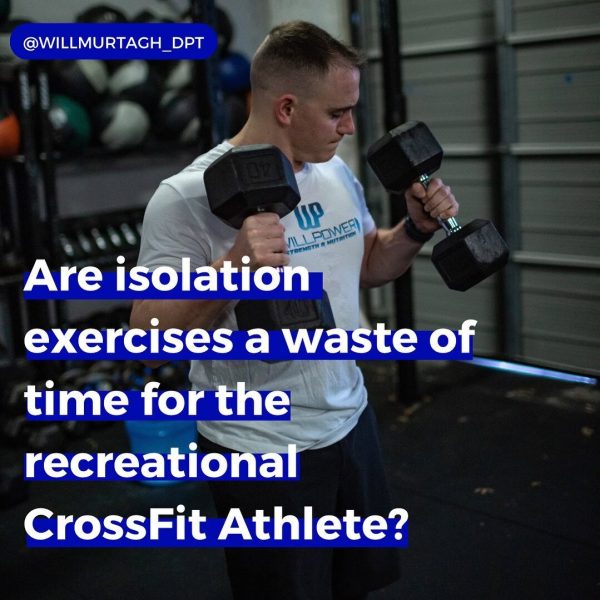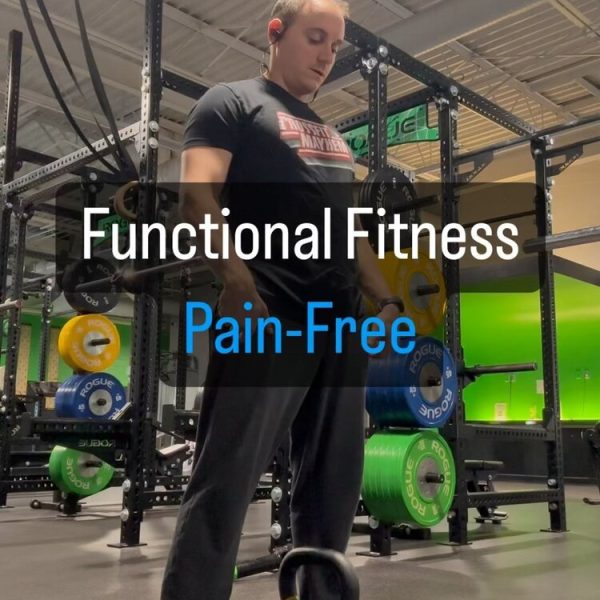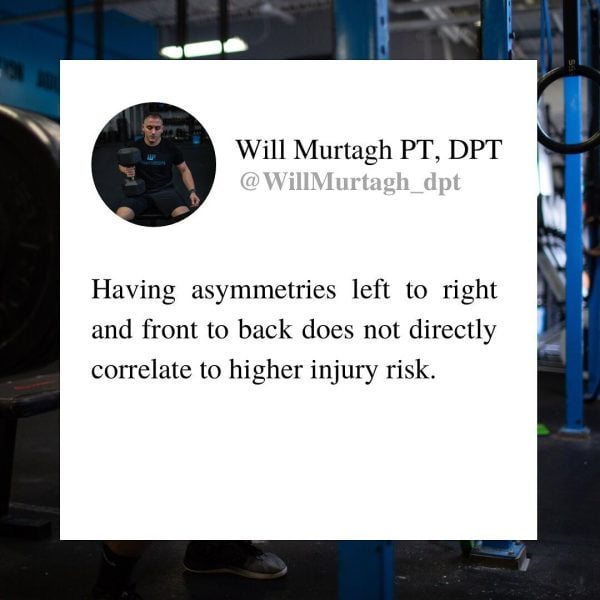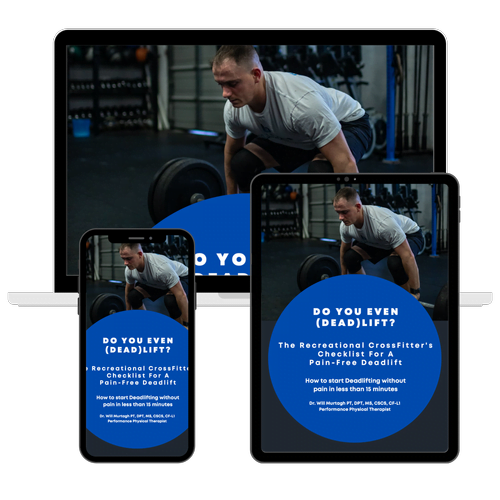Dr. Will Murtagh is a performance physical therapist and writer who helps Fitness Athletes elevate their fitness and train pain-free.
As an affiliate partner of various brands and sponsored content, WillPower Strength & Nutrition may earn commission on qualifying purchases.
When you think of training for CrossFit athletes you think of developing someone who is the quintessential “three headed monster”. This individual would possess high levels of fitness and capacity of strength, metabolic conditioning and skills to be deemed a well-rounded athlete.
As well as be able to express each of these regardless of the environment or task. Whether that be in a local CrossFit workout or at the CrossFit games.
But, today I want to challenge this idea that these three factors of a CrossFit athlete are exclusive and need to be developed individually.
Typical thinking of “skills” for CrossFit athletes tends to only refer to gymnastic skills and will exclude strengthening activities like Back Squats, Front Squats or the Olympic lifts.
However, I believe this to be a critical mistake for newbies to CrossFit workouts. The reality is that every single movement that you perform in the gym from a Wall Ball to a Handstand Push-Up to a Deadlift will be a skill in it’s own right.
When not considering all movements as skills you also miss the most important component of developing new skills as a CrossFit athlete which is the ability to perform the skill in a fatigue based setting.
When this approach is not taken it is a big part as to why new CrossFit athletes get frustrated with their development and ultimately leave the methodology all together.
So, let’s dive in to how to design training to improve the skills required in CrossFit. I will first go over a review of the stages of skill acquisition where you are first learning the skill. Followed by how to incorporate a learned skill into a training session to reach the highest level of execution of any skill.
Stages of Skill Acquisition
Cognitive Stage
The Cognitive stage is the initial stage of acquiring a skill where the brain and nervous system are attempting to understand the task. In this stage an underdeveloped understanding of the skill is the limiting factor.
The individual is trying to learn the principles behind the performance of the skill and thus mistakes are common.
This could be a kin to watching elite athletes perform Ring Muscle Ups and attempting them yourself for the first time with recurrent failed reps and the need for a regression to break the skill into its component parts.
Associative Stage
During this stage, CrossFit athletes have acquired the new skills but they are continuing to refine it and reduce the amount of errors or in the case of a training session, failed repetitions or improper technique.
In this stage the focus is on high amounts of repetition to allow the nervous system to ingrain the movement patterns to build consistency with the new skills.
Autonomous Stage
In the final stage of skill acquisition, the new skills have been fully engrained and the they can be done without much thought or effort. The skill can be done with improved precision and performance with very few failed reps.
This is present and can be seen in elite athletes where they can are able to perform high level skills at a drop of a hat with great technique and fluidity.
Once this stage has been reach in the specific skill work, you can move into integrating it into more traditional CrossFit workouts and higher intensity training sessions.
The ultimate goal for skill work for CrossFit athletes is to be able to perform them in metabolic conditioning environments as this is what makes up the majority of training or competition. The ability to perform skills in this environment where fatigue is high also tends to be the main limiting factor in performance.
Skill Progression For CrossFit Athletes
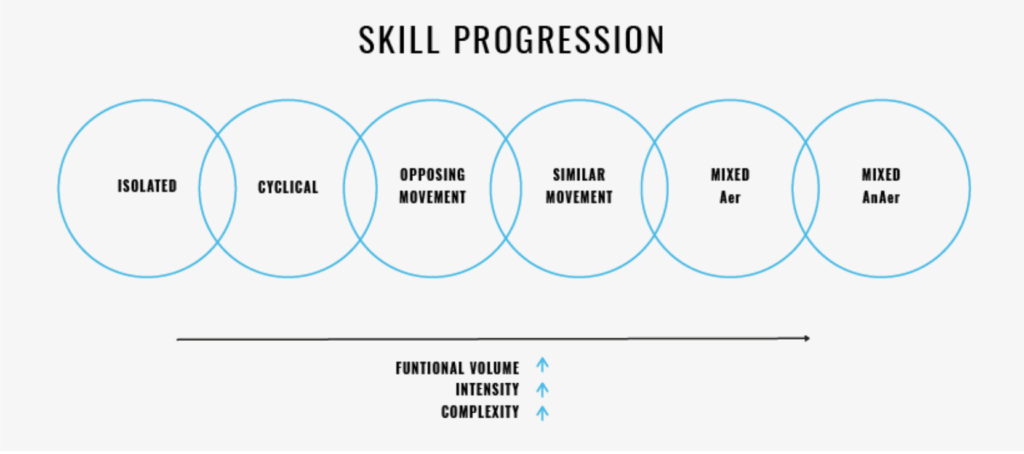
It is important to circle back to the beginning of this article when I mentioned that developing new skills in CrossFit athletes does not only refer to gymnastic skills. Every single movement pattern is a skill in it of itself.
Skill acquisition and progression is the same for every movement whether it is gymnastic skills or strength based.
The skill of squatting is learned through Air squats and then progressed to Back Squats. Just like the skill of a total body pressing is learned through Push Press and then progressed to a Handstand Push-Ups.
Additionally for each fundamental movement pattern you must progress “the skill” from motor control where the stages of skill acquisition mentioned above take place, to maximal contractions where you are developing the ability of a muscular unit within the movement to produce maximum force.
For more information on how strength training is progressed you can check out one of past articles below: The Best Program For Building Strength In CrossFit
Develop the skill in Isolation
In this initial stage of skill work the skill is being learned and engrained into the brain and nervous system. This is where the stages of skill acquisition are taking place. In this phase you are working on the ability of the body to be able to perform the skill with consistency and proper from.
Once this is achieved the next step is to build volume of the skill until you reach the required number of repetitions in a single training session that is required for either the sport of CrossFit or your daily function.
For example, if you are planning on progressing the Wall Ball and in a typical CrossFit competition athletes are required to perform 150 repetitions in a workout, the ultimate goal of this phase is to reach 150 repetitions in a single session and recover quickly.
In this phase, training sessions include only the movement by itself and provide as large of a rest period between sets as is needed to repeat the skill and build volume.
This can be done through straight sets, in an every minute on the minute format or any other strategy you would like as long as there is nothing challenging the movement beyond the new skill itself.
Develop The Skill With Cyclical Elements
Once adequate volume of the new skills is built to a necessary level, the next step is add a respiratory challenge.
Doing so will acclimate the individual to perform the skill with an element of fatigue and allow for improve conditioning of local muscle endurance. However, it is important to choose cyclical modalities that do not create local fatigue in the specific muscle groups that the skill in development uses.
This will fatigue the skill and lead to failed repetitions and poor learning as we have not reached that point in the progression yet where this can be maintained.
For example, using a Concept 2 Rower would not be appropriate for developing Deadlifts as the both incorporate the bending pattern.
A better option would be to use an Assault Bike instead so the movement pattern of bending has the ability to recover while a respiratory endurance component is still added.
As in the first stage, the goal of this phase is to then build the necessary volume but now with a respiratory component.
Develop The Skill With An Opposing Movement
The next step in the progression after volume has been built with a respiratory challenge is add in a movement that is different than the one you are developing but is more than a cyclical element.
For example, this could be pairing Back Squats with Double Unders as each of these movements challenge a different part of the body.
At this point in the skill progression the specific goals of each training session is to continue to develop the skill under an element of fatigue, but also use movements that challenge the nervous system more so than a cyclical element would.
But, not allow local muscle endurance to become a limiting factor for the skill we are focused on. If I had chosen to perform Pull Ups with Ring Muscle Ups, you can imagine how much fatigue would be built up in the arms and lat muscles. This is what we want to avoid in this phase as it would effect the performance of the skill.
Again, once the skill can be performed with proper form and consistency using cyclical elements and opposing movement patterns the last part of this stage is to build volume back up to the necessary levels.
Develop The Skill With A Similar Movement
Now is the point in the progression where the goal of the training program is to challenge the new skills with movement patterns that use the same specific muscle groups as the skill we’re focusing on.
To this point, you have learned the skill in isolation without fatigue, you have challenged the skill with a cyclical element and you have progressed to challenging the skill under fatigue with a movement that does not interfere with execution of the skill. As well as built up volume in each phase.
Next, is to use movements to drive local muscle fatigue to further challenge the skill work. This would look like pairing Rope Climbs with Bench Press where the Pec muscles will experience fatigue in both movements.
Although challenging, if CrossFit athletes have done the work leading up to this point they have earned the right to do so.
As with the other phases, the goal is to build volume to necessary levels and be able to maintain power output under muscle fatigue.
Develop The Skill In An Aerobic Environment
Up to this point the new skill has been developed to be able to be maintained in settings where muscle endurance is a limiting factor.
Even with the addition of cyclical elements the intent was not to actually improve metabolic conditioning but to give just enough of a nudge to the nervous system that blood flow to the specific muscle groups of the movement would be impaired and then adapt.
Once CrossFit athletes have reached this point the next step is to challenge the skill with the Aerobic System.
In this phase the skill will be performed in settings where the ability to maintain the skill under systemic fatigue is the goal. The respiratory endurance challenge will be high and muscle endurance will not play as much of a role in challenging the movement pattern in the training session.
This would look like Max Aerobic Power Intervals where the primary focus is on maintaining power output throughout the piece of work and developing sustainability of the skill for longer periods of time.
What this would not look like is feelings of lactic acid in the muscles, failed reps or having to take a long rest period mid interval in order to repeat the movement.
For more information on this concept you can check out these past articles of mine:
3 Signs You Are NOT Training Aerobically
VO2 Max vs Lactate Threshold: The Difference, How To Test Them and Why It Matters For Athletes
As usual, the end goal of this phase is to build volume back up to necessary levels under but in an Aerobic system challenging setting.
Develop The Skill In An Anaerobic Environment
The last phase of skill development for CrossFit athletes is the highest order for skill development because in this phase there is extremely high intensity and fatigue of the nervous system and high energy substrates will be the main limiting factor.
In this phase we are challenging the new skills within the Anaerobic energy system which you can learn more about in this past article:
In this phase, power output is the highest and you are working above your lactate threshold and as lactate begins to accumulate in the working muscles it will become harder and harder to perform the skill.
This level of skill progression is actually reserved for individuals who hope to compete at the highest level in the sport of CrossFit such as the CrossFit Games.
It is unlikely that this level of skill expression would be found in everyday life or in a normal workout of the day at your local box.
In this setting, the skill will be brought through the Anaerobic energy system starting from only several seconds of work all the way through to a high intensity three minutes of continuous work followed by a long rest period.
In this phase, all of the prior elements of the phases before it can be at play ranging from inclusion of cyclical elements through to similar movements to drive fatigue.
Once this phase is reached, the last and final step is to build volume and Anaerobic capacity so that the skill can now be incorporated into everyday training sessions and be maintained as the next skill is developed.
Given that all movements are skills in it of themselves, you can see how long this process can take for elite athletes to make virtually any skill look effortless at the CrossFit games.
This is why the road to become great in the sport of CrossFit can be such a long one and patience, realistic expectations and mental toughness is required.
Whether you wish to compete at the highest level or become the most well-rounded athlete as part of an overall fitness program following this progression will be a great way to develop the skills necessary to do so and help you reach your fitness goals as quickly as possible.



